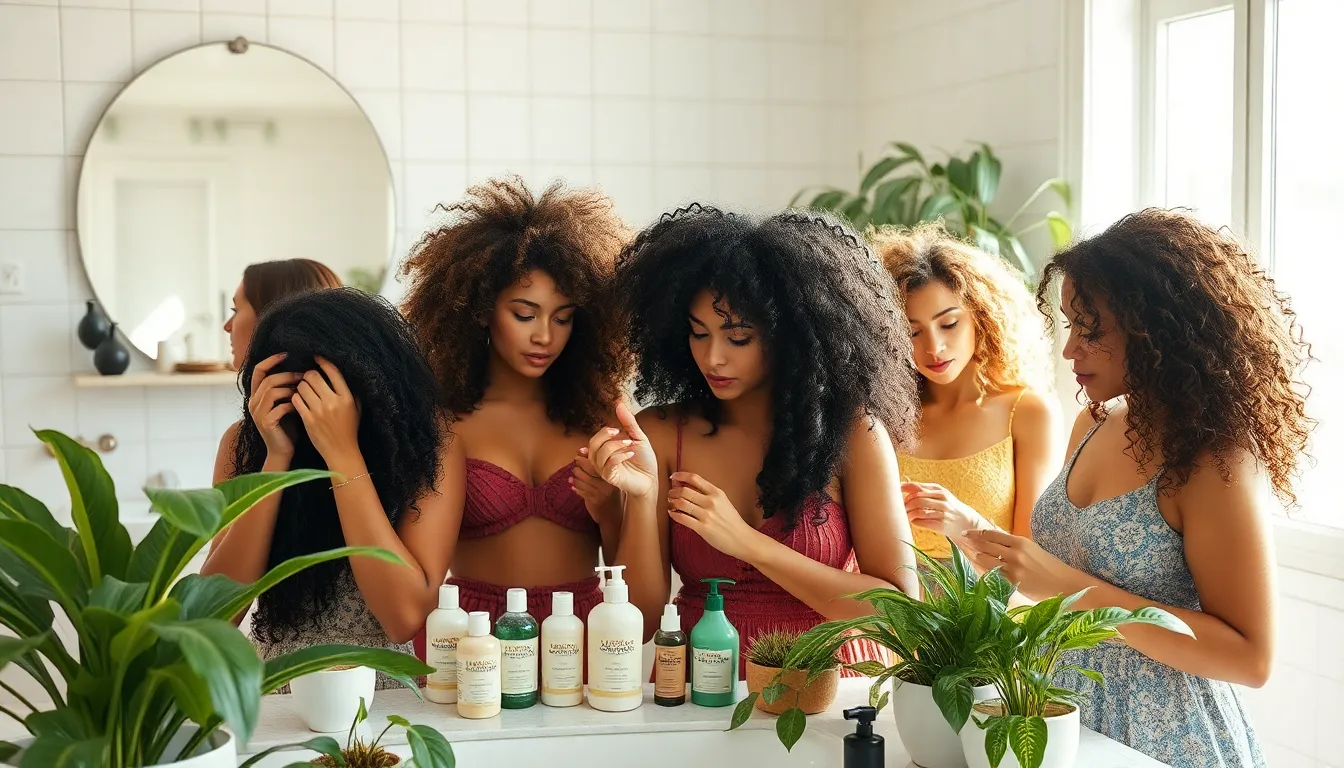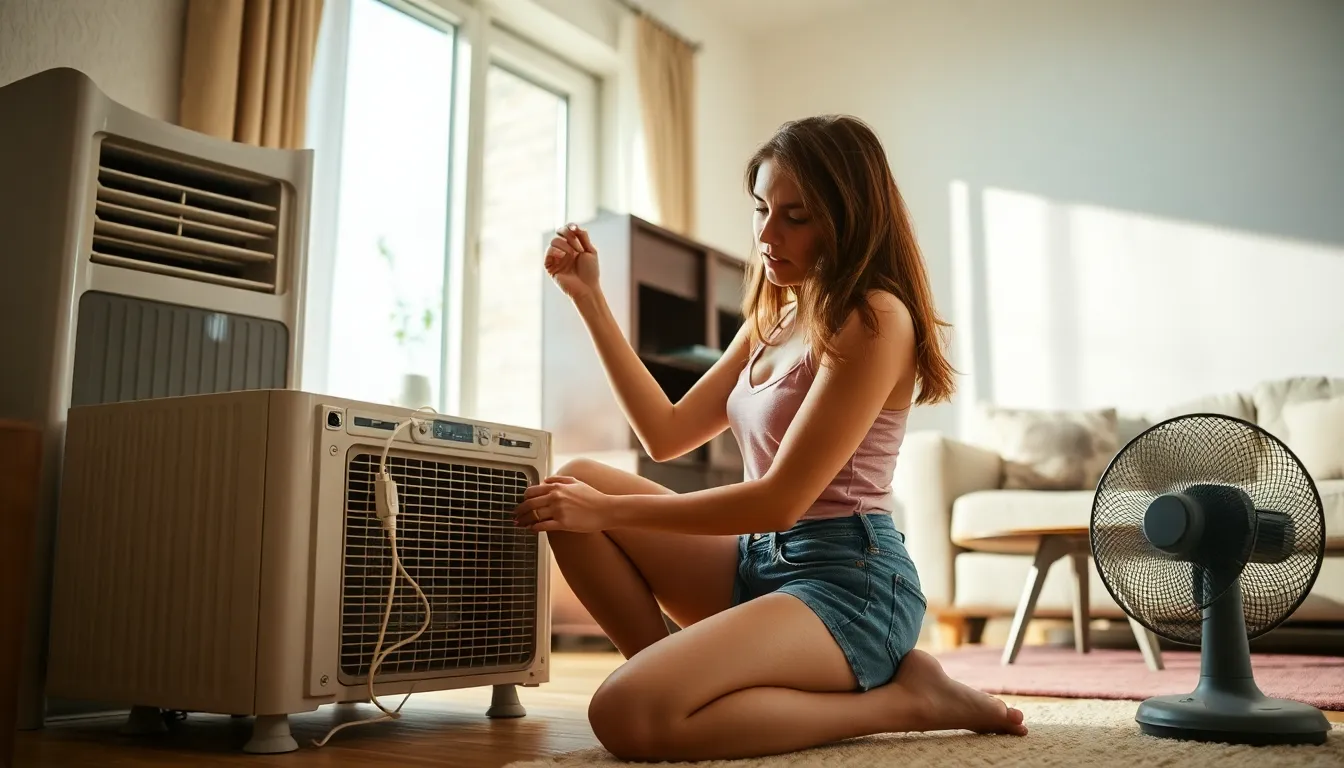Table of Contents
ToggleEver stood in front of the mirror, hair looking like a frizzy bird’s nest, and wondered if there’s a magic potion to tame it? Enter leave-in conditioner—the superhero your hair didn’t know it needed. This lightweight elixir can transform dry, unruly locks into silky strands that shine brighter than your future. But when should one wield this powerful tool?
Benefits of Leave In Conditioner
Leave-in conditioner offers numerous advantages for maintaining healthy hair. It enhances overall manageability while providing essential nutrients.
Moisture Retention
Moisture retention remains a key benefit of leave-in conditioner. It hydrates hair strands, preventing dryness throughout the day. Products with ingredients like glycerin attract moisture. Regular use can significantly improve hair texture. It locks in hydration, making hair feel softer and smoother. Those with curly or textured hair often find relief from dryness when using leave-in options. Keeping hair well-hydrated helps reduce brittleness. A good leave-in conditioner ensures that hair remains pliable, avoiding breakage.
Frizz Control
Frizz control is another important advantage of leave-in conditioner. It creates a protective barrier against humidity, minimizing frizz and flyaways. Silicones commonly found in leave-in products coat the hair shaft, offering extra shine and smoothness. Ensuring that every strand remains sleek can be particularly beneficial in humid environments. Users often report a noticeable reduction in frizz after consistent application. Embracing leave-in conditioner allows for more styling versatility without the worry of unruly hair. Maintaining a polished look throughout the day becomes achievable with regular use.
Factors to Consider

Several aspects influence the effective use of leave-in conditioner. Understanding these factors can enhance hair care routines significantly.
Hair Type
Hair type plays a crucial role in selecting the right leave-in conditioner. Curly hair often benefits from products that offer intense hydration due to its natural dryness. Straight hair may require lighter formulations to avoid feeling greasy. Additionally, wavy hair can thrive with a balanced conditioner that nourishes without weighing it down. It’s essential to consider porosity; highly porous hair absorbs moisture readily and needs richer products, while low-porosity hair may prefer lightweight options that won’t overwhelm the strands.
Environmental Conditions
Environmental conditions affect how hair behaves and reacts to products. High humidity tends to increase frizz, making leave-in conditioners that focus on moisture retention more beneficial. Conversely, dry, arid climates can strip hair of moisture; products with enriching oils work well in these situations. Seasonal changes also impact hair’s needs. Winter’s chill often leaves hair craving extra hydration to combat dryness, while summer sun may require protection against UV damage. Adjusting the leave-in conditioner choice based on these conditions promotes optimal hair health.
When to Use Leave In Conditioner
Using leave-in conditioner enhances hair health and styling flexibility. The right timing maximizes its benefits, depending on hair needs.
Daily Use
Daily use of leave-in conditioner provides consistent hydration. It suits people with dry or frizzy hair types by helping maintain moisture levels. Regular application ensures strands remain smooth and manageable throughout the day. Those with textured hair often find this approach beneficial, as it protects against breakage and environmental stressors. Applying a small amount each morning supports a polished appearance.
After Washing Hair
Applying leave-in conditioner after washing hair delivers optimal results. Clean, damp hair absorbs moisture effectively, enhancing the product’s benefits. This step creates a barrier against heat styling tools and environmental humidity. Concentrating on ends helps prevent split ends and retains definition, especially for curly textures. A suitable leave-in product improves detangling, making hair more manageable post-shower.
On Dry or Damaged Hair
Using leave-in conditioner on dry or damaged hair revitalizes and restores vitality. Targeting specific areas suffering from breakage or frizz allows for intense hydration. For hair exposed to chemical treatments or heat, this method provides an extra layer of protection. Applying the product at bedtime can make a difference, allowing it to work overnight. Results include softer, healthier looking hair that feels nourished and vibrant.
How to Apply Leave In Conditioner
Applying leave-in conditioner correctly maximizes its benefits, ensuring effective hydration and manageability.
Amount to Use
Using the right amount of leave-in conditioner is crucial. A small amount, about the size of a quarter, works well for medium-length hair. For shorter hair, a dime-sized amount suffices. Those with long or thick hair may require a bit more, around two quarters. Adjusting the quantity based on hair texture also enhances results; fine hair benefits from lighter applications while coarse, curly hair handles a heavier product. It’s important to start with less; additional product can always be added if needed.
Application Technique
Applying leave-in conditioner involves a straightforward technique. Begin by ensuring hair is clean and damp, as this aids absorption. Sectioning the hair into manageable parts allows for even distribution. Applying the product with fingers or a wide-tooth comb ensures thorough coverage from roots to ends. Balancing the distribution prevents buildup and maintains a light feel. Emphasizing the ends, where hair tends to be drier, enhances moisture retention. Lastly, avoiding the scalp area keeps hair looking fresh and reduces greasiness.
Leave-in conditioner is a game changer for anyone looking to enhance their hair’s health and appearance. By understanding when and how to use it, individuals can unlock its full potential. Whether it’s daily hydration or targeted treatment for dry strands, this product offers versatility for all hair types.
Adapting the application based on hair texture and environmental conditions ensures optimal results. With the right approach, leave-in conditioner can transform hair from frizzy and dull to smooth and vibrant. Embracing this essential tool can lead to a noticeable difference in managing and styling hair effectively.







